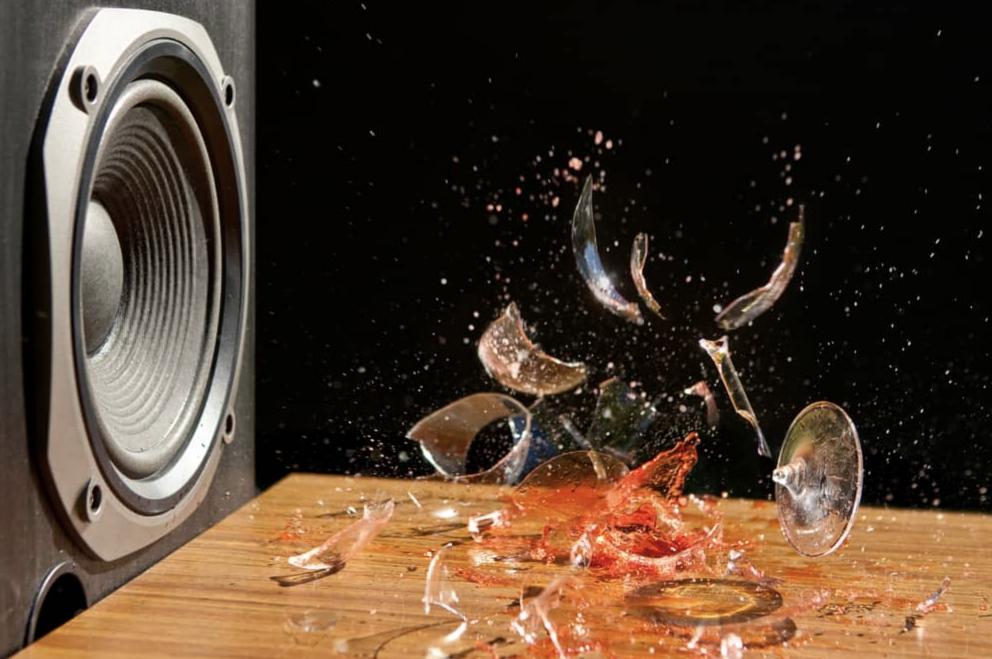Hey there, bass lover! Are you all about that deep, heart-thumping bass a great subwoofer delivers? I totally get how it feels when it doesn’t hit those lows like it used to. Let’s go on and figure out what’s up with your sub. I’ll guide you through spotting the signs of a subwoofer that’s not doing its job and what to do about it.
We’ll check out the clear indicators of a sub that’s seen better days, inspect it closely, and even use a multimeter to get to the bottom of things. With this knowledge, you’ll be ready to make a smart call – fix it up or get a new one. Ready to dive in? Let’s get started!
Signs of a Blown Subwoofer
A key sign of a blown subwoofer is a drop in sound quality, especially in those deep bass frequencies we all love. If your beats are sounding more like buzzes or you’re missing those deep notes altogether, your subwoofer might be crying for help. Now, why does this happen? Often, it’s all about power – too much of it. Pushing your subwoofer past its happy place, especially in terms of RMS wattage (Root Mean Square, that’s the power it can handle continuously), can really stress it out, leading to overheating and, yep, a blown subwoofer.
Another troublemaker? Distorted signals. Imagine feeding your subwoofer a diet of bad, distorted audio. Not only does this mess with sound quality, but it can also physically damage your bass fellow. So, keeping an ear out for these changes in your subwoofer’s performance can save you from a world of bass-less blues. Let’s keep those beats bouncing the right way!

Physical Inspection for Damage
Now, imagine you’re on a quest to uncover the hidden secrets of your subwoofer. Begin by delicately examining the physical components. Look closely at the subwoofer cone – is it intact, or does it bear scars like tears or punctures? These tiny imperfections can dramatically alter the sensual dance of bass frequencies. Look closely at the subwoofer cone – is it intact, or does it bear scars like tears or punctures? These tiny imperfections can dramatically alter the sensual dance of bass frequencies.
Now, let your fingers wander to the connections. Loose or weak connections can lead to poor electrical contact. This often results in distorted sounds or, in some cases, complete silence. It’s a dance of connectivity and precision, where every contact point plays a crucial role in the symphony of sound.
Introduce a multimeter into this exploration for a deeper understanding. This tool allows you to measure voltage, resistance, and current, whispering the hidden truths of your subwoofer’s condition.
Using a Multimeter to Test for Damage
Let’s get friendly with our handy tool called a multimeter. It’s like having a secret key to unlock the mysteries of your subwoofer’s health. Ready to play detective? Let’s go!
Testing Impedance
First up, we’re measuring the impedance. Think of this as how much your subwoofer is resisting the electric current. Connect your multimeter to the subwoofer’s terminals and see what the reading says. It’s like asking your subwoofer, “How’s the journey for the current today?” Compare this number with what the manufacturer suggests – it should be a close match!
Checking Coil Resistance
Next, we focus on the subwoofer coil resistance. This is like checking the heartbeat of your subwoofer. Here’s how:
- Disconnect the subwoofer from the amplifier.
- Measure the resistance across its terminals.
- A healthy subwoofer will show a resistance reading similar to what’s on the spec sheet. If it’s way off, it’s like finding out your subwoofer’s heart is skipping a beat!
Using a multimeter not only makes you feel like a tech-savvy audio buff, but it also gives you real insights. It’s like having a heart-to-heart with your sub, understanding its condition, and making smart choices about repairs or upgrades. Think of it as keeping the beats in your life strong and vibrant!

Fixing a Blown Subwoofer
After playing detective with your multimeter, it’s time to weigh your options for either reviving it or bidding it farewell. Let’s look at the paths you can take:
- Reconing: This is like giving your subwoofer a new lease on life. It’s a complete makeover – replacing the cone, the voice coil, and sometimes more. It’s a savvy choice if the damage is confined to these parts. Keep in mind, though, this isn’t a DIY job for beginners; it calls for some technical chops and the right tools.
- Troubleshooting: Sometimes, all your subwoofer craves is a gentle touch. A bit of troubleshooting – checking connections, replacing a sultry, damaged wire, or delicately adjusting your amplifier’s settings – might just rekindle the flame and get those bass notes throbbing again.
- Replacement: There are times when the damage is just too much, or the cost of repair doesn’t make sense. That’s when you should consider getting a new subwoofer. It’s like saying goodbye to an old friend and hello to a new one, ready to fill your space with those beloved bass notes.
Each option has its place, depending on the problem at hand. Whether it’s a surgical repair or a fresh start with a new subwoofer, the goal is to get your sound system back to delivering those deep, room-filling bass tones we all love!
Preventing Subwoofer Damage
To keep those deep, alluring bass notes flowing without a hitch, here’s a little whisper of advice:
- Volume Control: Treat it gently. Blasting music at max volume is thrilling but risky. Keep the volume at a level where it thrills without threatening the integrity of your subwoofer.
- Proper Positioning: Place your subwoofer in a spot that allows it to breathe, away from cramped corners. Think of it as giving your subwoofer its own dance floor to perform its magic.
- Regular Check-ups: Like any good relationship, communication is key. Regularly check connections, settings, and the general wellbeing of your subwoofer. It’s the small gestures that maintain harmony and prevent heartbreak – or in this case, speaker break.
Treat your subwoofer with care, and it will reciprocate with those deep, mesmerizing beats that resonate right through you.
Conclusion
Wrapping up, figuring out if your subwoofer has lost its groove is key for anyone who cherishes that deep, pulsating bass. By conducting a physical inspection and using a multimeter to measure voltage, resistance, and current, you can determine the extent of the damage. Protecting your audio buddy from future mishaps is crucial. Armed with these insights, you’re all set to maintain that perfect pitch and quality, ensuring every beat and bass drop is as immersive and captivating as intended.
Frequently Asked Questions
Yes, a blown subwoofer can sometimes be repaired at home. Signs of a blown subwoofer include poor sound quality, distortion, or no sound. However, it is recommended to have a professional inspection and check the warranty before attempting any repairs.
Repairing or replacing a blown subwoofer can be costly. Signs of a blown subwoofer include poor sound quality, distortion, or no sound. Factors such as brand, model, and extent of damage can affect the cost.
If our subwoofer is blown and still under warranty, we should first check the warranty terms to see if repairs or replacements are covered. It’s important to disconnect the subwoofer to prevent further damage and contact the manufacturer for professional inspection and assistance.
Subwoofer maintenance tips include avoiding excessive power and distorted signals. Common causes of blown subwoofers are operating beyond their limits and using distorted signals. DIY methods to fix a blown subwoofer may be possible in some cases, but professional inspection is recommended.
Using a blown subwoofer in a car audio system can potentially damage other audio equipment. To prevent subwoofer damage and prolong its lifespan, avoid exceeding power limits and using distorted signals.
Author
-

Hello, I’m Monica Blunder. As a fervent author and a DJ enthusiast, I’ve spent years immersed in the world of DJs and their music. My job here at EverybodyIsADJ.com is to keep you informed about the latest trends, tips, and news from the DJ community.

